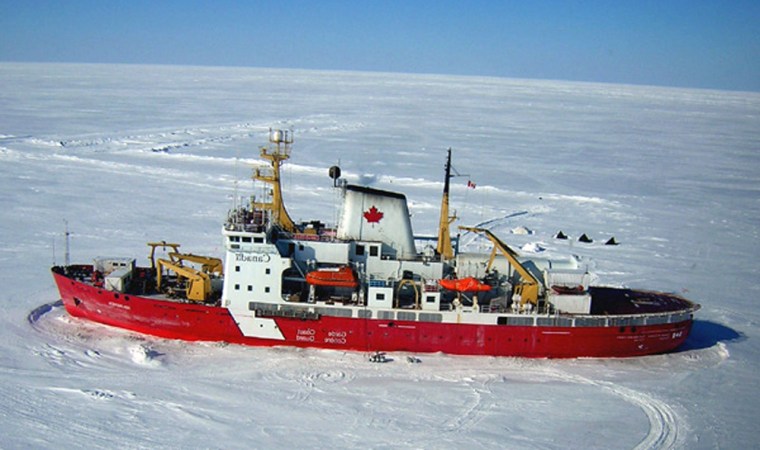The largest research project ever undertaken in the Arctic will study the impact of global warming on the sensitive region’s ecosystem next winter, Canadian project leaders said Thursday as the International Polar Year was formally launched.
Researchers will troll a frigid open channel on the Beaufort Sea using a retrofitted icebreaker to study the Arctic environment and its shrinking sea ice.
The $34 million investigation involving more than 200 researchers from 14 countries is believed to be the largest single study in the International Polar Year program, launched on Thursday in Paris.
It will be the first time a ship has spent the winter in the circumpolar flaw lead — the cracks that develop between the permanent polar ice and coastal ice — said David Barber, a Canadian sea ice expert leading the study.
“These cracks are early indicators of what we expect the Arctic to look like as we move into the future, because more and more, the Arctic will be open of sea ice,” said Barber, who is based at the University of Manitoba.
Sea ice shrinking
Global warming is amplified at the Earth’s poles, melting about 27,000 square miles of Arctic ice each year, an area the size of Lake Superior. That pace could see the region free of sea ice by 2050, which would have implications for the Inuit natives and polar bears, as well as for shipping and offshore oil and mineral development, Barber said.
Less ice means the ocean can absorb more sunlight, further heating up the water and the environment, and affecting the entire ecosystem. But more sunlight also stimulates biological activity.
"They become like an oasis in the desert," Barber said of the cracks. "They're biologically very active because there's this energy that's driving the ecosystem, and that allows us to look at what the Arctic is going to look like in the very near future."
“The research in the project covers everything in the physical world from the bottom of the ocean to the top of the atmosphere ... and everything in the ecological world from viruses to whales,” he added.
“The whole idea is to understand the interconnections between how the physical world changes and the effects it has on the biological world.”
Logistical challenge
The logistics of changing crews and supplying the ship in the high Arctic are daunting, although team leaders gained experience overwintering in the same icebreaker, socked into frozen coastal ice, four years ago.
Researchers will need to arm themselves against fearless polar bears, and gird themselves for temperatures as low as -58 Fahrenheit.
“It’s a dangerous place,” Barber said. “There’s enough force and energy in this mobile ice to crush an icebreaker.”
In total, Canada will spend $128 million on 44 polar projects, making it the largest International Polar Year participant.
The icebreaker work is to begin in October and continue until August 2008.
This is the fourth International Polar Year, which is held every 50 years.
Eyes on energy, borders
The project is being watched by shippers, who see the Arctic’s fabled Northwest Passage as a future shipping route, and by oil and gas developers, who are looking to tap the area’s vast energy resources, Barber said.
An estimated 25 percent of the world’s known oil and gas reserves are in the Arctic.
There is also political interest in the study, since the United Nations Convention on the Law of the Sea requires Canada to define its continental margins in the Arctic.
"We've never done this before, so we're not sure exactly what areas are attached to our continent so that we can lay claim to mineral development and oil development on those areas," said Barber.
The study will also involve Inuit and Inuvialuit people who live and hunt in the region, near Banks Island in the Northwest Territories.
Until recently those natives did not have words in their language for such things as bumblebees and sunburn, Barber said.
“We want to integrate the traditional knowledge they hold with the scientific knowledge from these projects,” Barber said.
Gary Stern, who is co-leading the project, said the research will have applications farther south.
"Most people think the Arctic is a long way away; it doesn't really affect their lives," he said. "But now they're seeing more storms, they're seeing more flooding, warmer winters, more precipitation, so they're starting to feel what effects climate change is starting to have on their lives."
